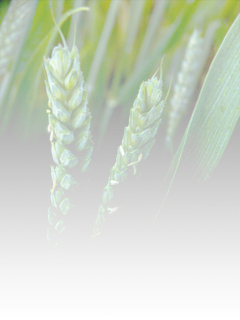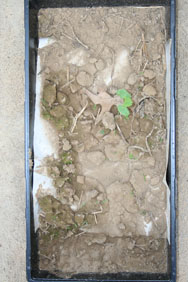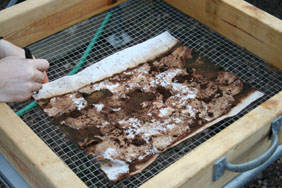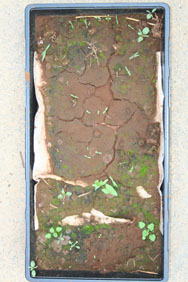Development of Next Generation Biodegradable Mulch
Nonwovens to Replace Polyethylene Plastic
(Smith, Wadsworth, Hayes, Sams, Kamuth and Wszelaki) |
|||||
|
The purpose of this research is to develop the next generation of low-cost, biodegradable mulch nonwoven fabrics to replace polyethylene plastic, without the drawbacks of the current biodegradable textile and film options. Plastic mulch offers a number of benefits to farmers, like weed control, disease protection, and optimization of soil temperature and moisture. However, there are a number of emerging economic and environmental issues regarding use and disposal of polyethylene mulch. The cost of polyethylene mulch is increasing, due to rising petroleum prices, and this trend can only be expected to continue. In addition, polyethylene plastic cannot be tilled into the soil after use and must be extracted from the field. Removal is time consuming, and there are significant labor costs involved. Once it is removed, the used plastic is typically sent to a landfill, or else it is buried or burned on the farm. Recycling options are limited and sustainable alternatives are needed. We are developing biodegradable mulch fabrics from renewable resources using polylactic acid (PLA) that will be given a treatment to make it truly biodgradable on controlled schedules. The current PLA mulch films that are available are 'compostable' under specific conditions, but will generally not biodegrade in soil. PLA is made from lactic acid, a fermentation by-product derived from corn, wheat, rice or sugar beets. The PLA mulch nonwovens are designed so that they are durable throughout the growign season, and then rapidly degrade in the field with the application of a breakdown treatment. By using mulch fabric that degrades in the field, farmers will save significant labr and disposal costs, help conserve resources, and decrease pollution.
|
|
|||





